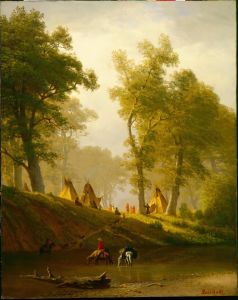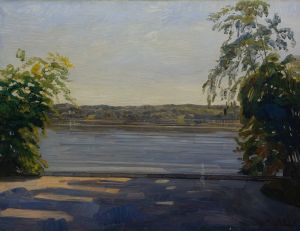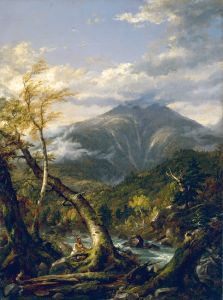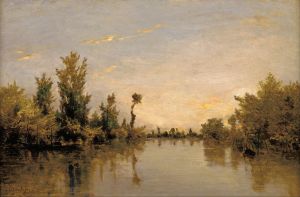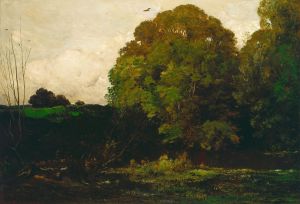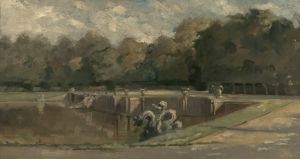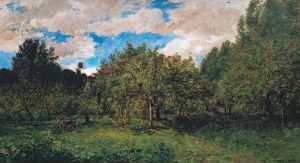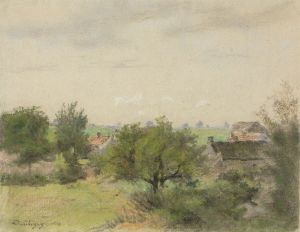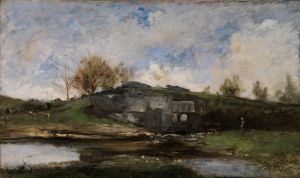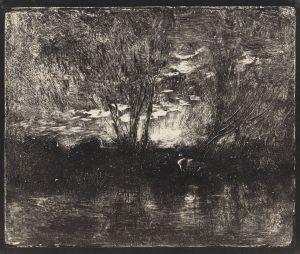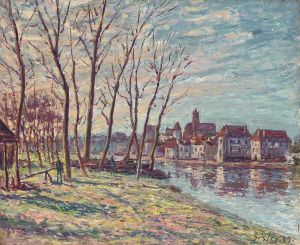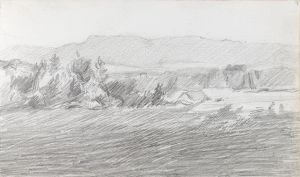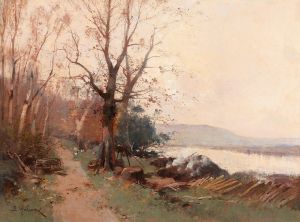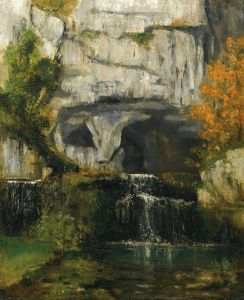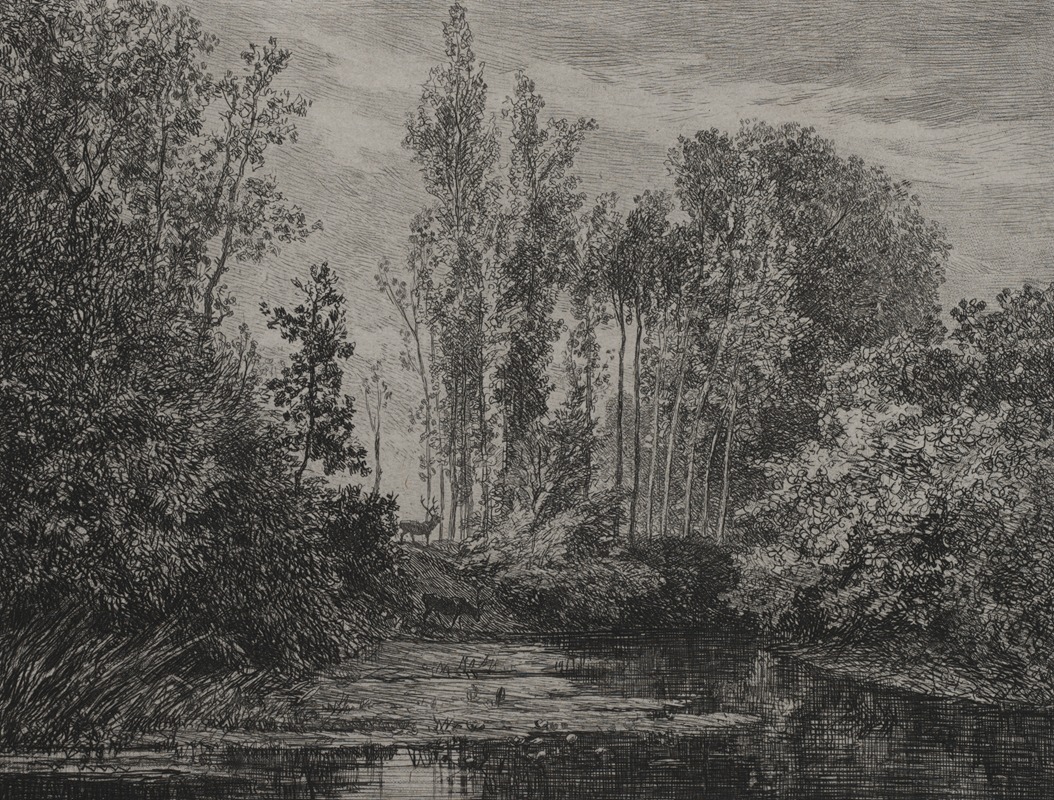
Stags at the water’s edge
A hand-painted replica of Charles François Daubigny’s masterpiece Stags at the water’s edge, meticulously crafted by professional artists to capture the true essence of the original. Each piece is created with museum-quality canvas and rare mineral pigments, carefully painted by experienced artists with delicate brushstrokes and rich, layered colors to perfectly recreate the texture of the original artwork. Unlike machine-printed reproductions, this hand-painted version brings the painting to life, infused with the artist’s emotions and skill in every stroke. Whether for personal collection or home decoration, it instantly elevates the artistic atmosphere of any space.
Charles François Daubigny, a prominent French landscape painter of the 19th century, is widely recognized as one of the key figures in the Barbizon School and a precursor to Impressionism. His painting "Stags at the Water’s Edge" exemplifies his mastery of naturalistic landscapes and his ability to capture the serene beauty of rural scenes.
"Stags at the Water’s Edge" depicts a tranquil moment in nature, with a group of stags gathered near the edge of a body of water. The composition emphasizes the harmony between the animals and their natural surroundings, a theme frequently explored in Daubigny’s work. The painting showcases his characteristic use of soft, diffused light and a muted color palette, which lend the scene a peaceful and atmospheric quality. The stags are rendered with a sense of realism, yet the focus remains on the overall mood and setting rather than intricate detail.
Daubigny often painted en plein air (outdoors), a practice that allowed him to observe and depict the changing effects of light and atmosphere directly from nature. This approach is evident in "Stags at the Water’s Edge," where the interplay of light and shadow creates a sense of depth and immediacy. The painting reflects Daubigny’s deep appreciation for the natural world and his ability to convey its quiet majesty.
While specific details about the creation and provenance of "Stags at the Water’s Edge" are not widely documented, it is consistent with Daubigny’s broader body of work, which frequently featured rivers, forests, and pastoral scenes. His landscapes often included animals as integral elements of the composition, underscoring the interconnectedness of life and the environment.
Daubigny’s influence extended beyond his own work; he played a significant role in shaping the development of modern landscape painting. His innovative techniques and focus on naturalism inspired later artists, including Claude Monet and other Impressionists, who admired his ability to capture the fleeting effects of light and atmosphere.
Today, "Stags at the Water’s Edge" is appreciated as an example of Daubigny’s contribution to 19th-century landscape painting. It reflects his dedication to portraying the beauty of the natural world with sensitivity and authenticity. The painting continues to be celebrated for its artistic merit and its place within the broader context of French art history.





